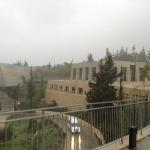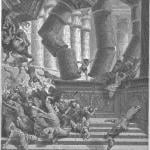
My wife and I are just back from the monthly meeting of a reading group to which we’ve belonged for something approaching three decades. Tonight, it was at the home of the brother-in-law and sister of Richard Bushman — like her brother, by the way, she earned a doctorate at Harvard; her husband had to settle for schooling at the nearby Massachusetts Institute of Technology.
Tonight’s book for discussion was Melissa Wei-Tsing Inouye’s eminently discussable Crossings: A Bald Asian American Woman Scholar’s Ventures through Life, Death, Cancer & Motherhood (Not Necessarily in That Order) (Salt Lake City: Neal A. Maxwell Institute for Religious Scholarship and Deseret Book, 2019).
Happily, Melissa herself was able to come for the discussion. (She has now left her most recent teaching position at the University of Auckland in New Zealand and is working for the Historical Department of the Church of Jesus Christ of Latter-day Saints.) She is a remarkable person on multiple levels, and her book is remarkable. (Incidentally, one of its chapters, entitled “Faith is Not a String of Christmas Lights,” is an expanded version of her 2012 entry on my Mormon Scholars Testify website.)
I share here a passage from Crossings; it’s one of many that I liked:
One way to understand Latter-day Saint faith is to analyze published doctrines, such as concepts of the Godhead, claims to restore Christ’s primitive church, original books of scripture, and the pronouncements of ecclesiastical leaders. Another way is to study history, such as the founding claims of an uneducated but charismatic farm boy in upstate New York, a period of persecutions by the Protestant and civic establishments, westward migration to the Great Basin, assimilation to American society, and, in recent decades, a momentous new process of globalization. These approaches have their advantages and disadvantages. On the one hand, they are systematic and comprehensive in scope. They identify key actors, dominant trends, central concepts.
On the other hand, a faith tradition is much more than a discrete set of ideas, beliefs, or even organizational structures. It is deeply rooted in individuals’ daily experiences, a way of life held together by a variety of complex person-to-person interactions. Sociologists and anthropologists have attempted to explore these human dimensions through surveys and ethnographers, and writers have attempted to capture them in literature. This localized or individualized approach yields piecemeal, sometimes contradictory representations of what it means to be a Latter-day Saint. For instance, Eliza Roxcy Snow and Ann Eliza Webb were both wives of Brigham Young, but in her public discourse Eliza defended the Church’s institution of plural marriage, while Ann Eliza published an exposé describing abuse and heartbreak. A survey of Latter-day Saint teenagers in the United States will paint a different picture of faith compared to an ethnography of mature Latter-day Saint women in Botswana. Yet these focused, particularistic studies are just as authentic as sweeping theological or historical overviews. The gospel of Christ does not exist in the abstract. It only becomes real as it sounds in the ears of individuals who desire to hear it, and only comes forth as these individuals bend their lives to its call. (256-257)












